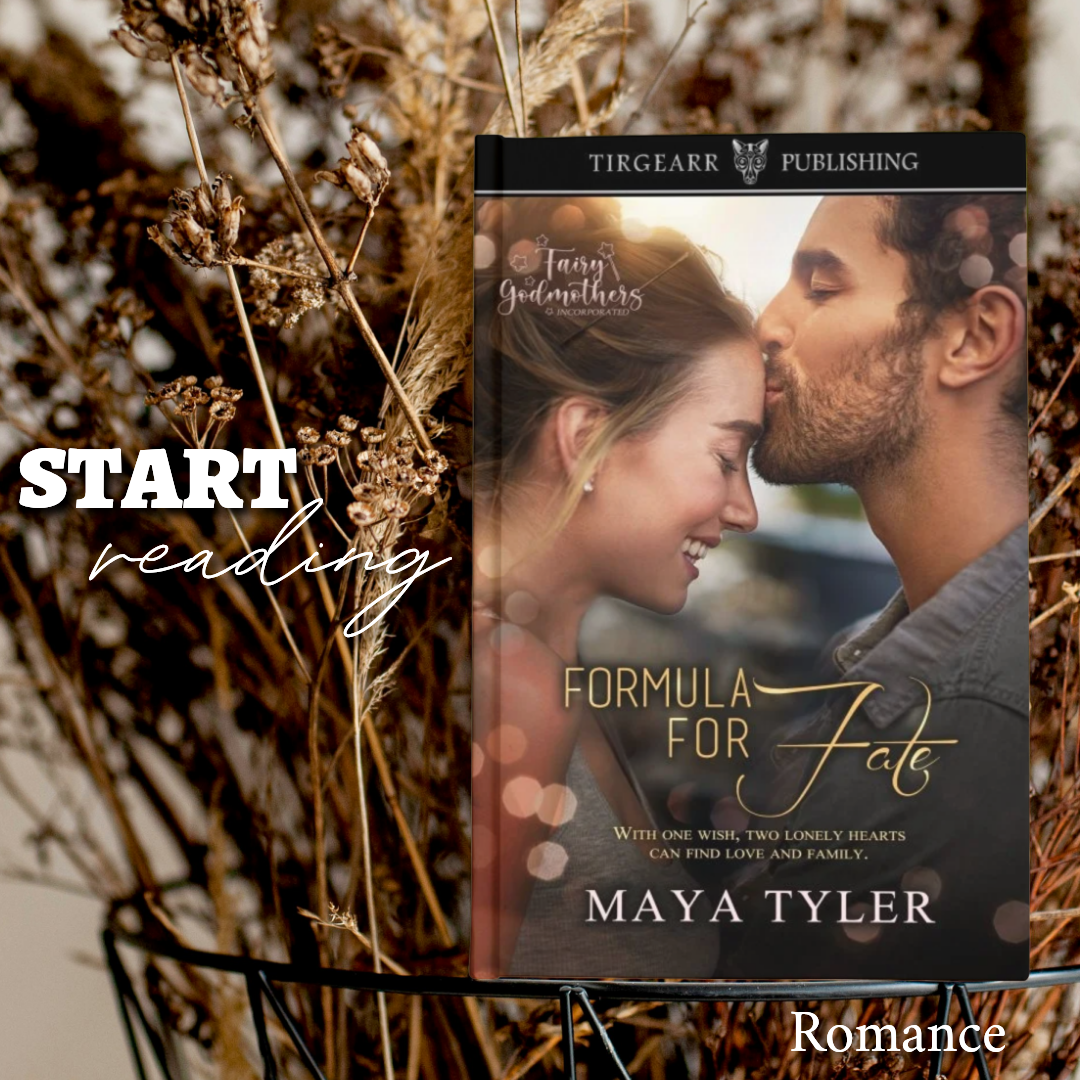This book promotion is through Author Marketing Experts.
Wicked Witch book amplifier tour includes an author Q&A, guest post, and an exclusive excerpt of this insightful new read – a must for Oz and Wicked fans. Comment, share, follow Sarandipity’s.
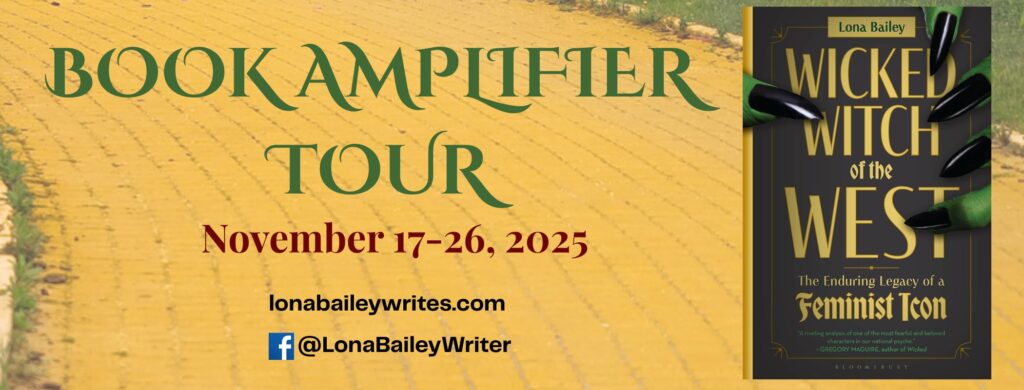
Your message has been sent
Book Details
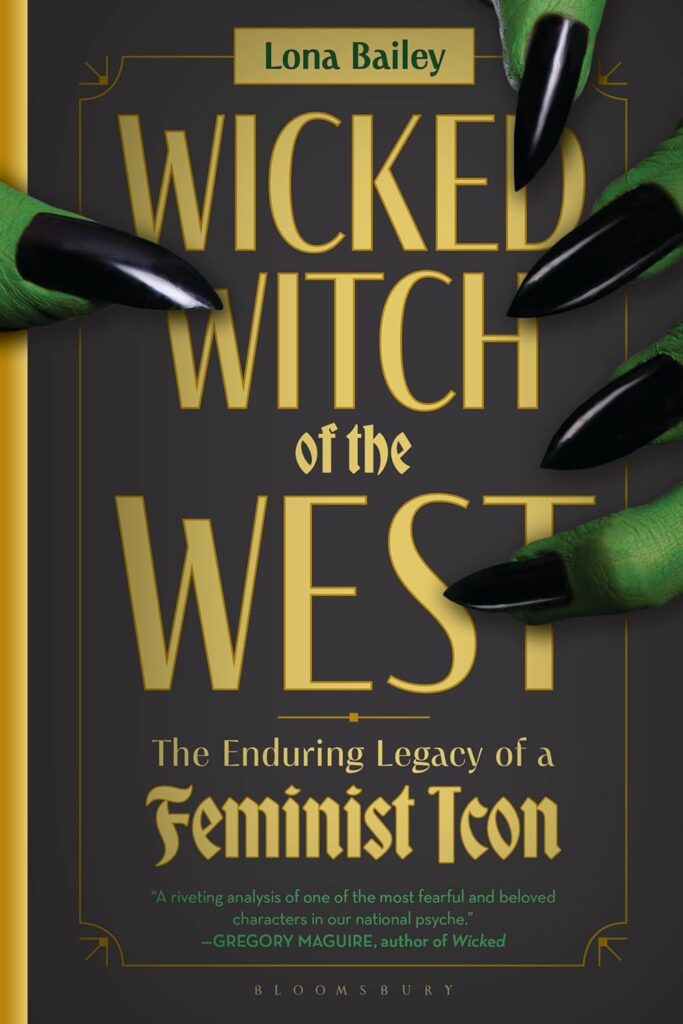
Every generation finds its own reflection in a story, and for more than a century, that reflection has glimmered in the green-skinned defiance of the Wicked Witch of the West. In The Wicked Witch of the West: The Enduring Legacy of a Feminist Icon, Dr. Lona Bailey reimagines one of literature’s most misunderstood women, exploring how she came to embody the power, rage, and resilience of those who refuse to be silenced.
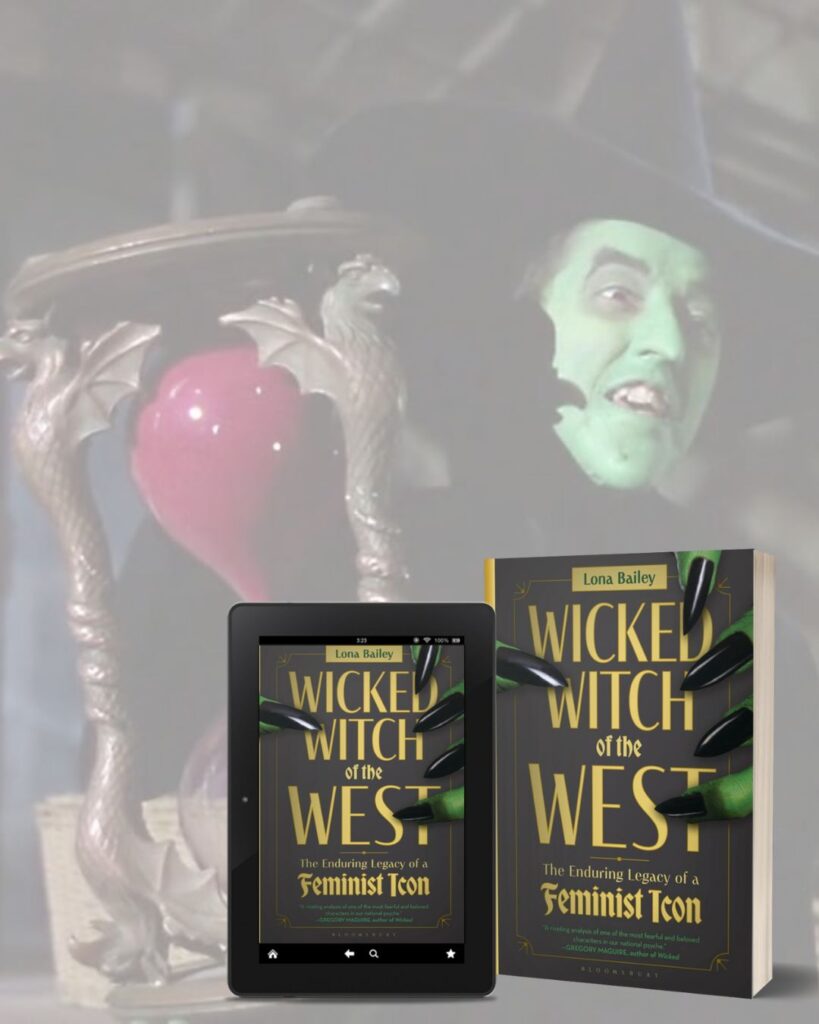
Bailey traces the Witch’s evolution from her 1900 debut in L. Frank Baum’s The Wonderful Wizard of Oz through a century of reinvention on stage and screen. Along the way, she reveals how each retelling mirrors society’s shifting attitudes toward women’s ambition and independence. What emerges is a portrait of transformation—of a character who began as a cautionary tale and became a symbol of liberation. The Witch’s legacy, Bailey argues, is not rooted in evil but in resistance: a challenge to every narrative that punishes women for their power. This is cultural criticism written with heart and intelligence, as Bailey connects the Witch’s journey to the broader fight for equality that continues to shape our world.
Author Details
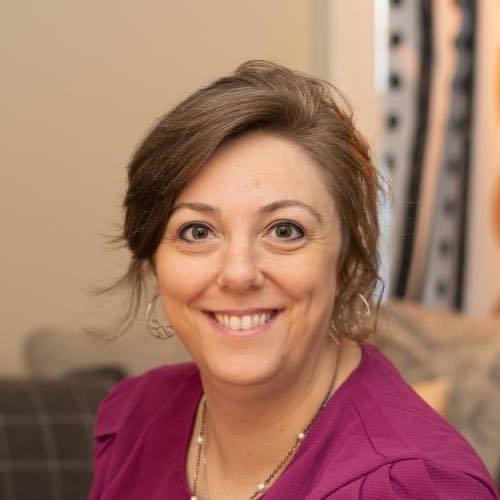
Dr. Lona Bailey is an award-winning Hollywood historian and biographer whose work resurrects the stories of women erased by time. Her celebrated books—including Voice of Villainy: The Betty Lou Gerson Story and The Wasp Woman: The Life, Career, and Brutal Murder of Hollywood’s Susan Cabot—combine historical precision with narrative grace, offering readers an intimate understanding of women’s struggles for autonomy. With a PhD and a background in therapy, Bailey approaches her subjects with empathy, insight, and intellectual rigor. Her Voice of Villainy biography received national recognition in 2023, earning both finalist and gold medal honors. Learn more about her work on her website or through Facebook.
Author Guest Post
While researching this book, I discovered just how much world history has
culminated to give us what we now recognize as the icon of the Wicked Witch. Her
evolution was absolutely fascinating to trace. We tend to think of witches in fiction as
timeless villainesses who have “always” existed in a fixed way, but that couldn’t be
further from the truth. The figure of the witch reaches back to ancient
civilizations—where she could be feared, revered, or misunderstood—and over the
centuries she has been shaped by religion, politics, gender norms, and folklore. What
struck me most was how, in the last hundred years especially, the witch has transformed
from a symbol of evil into one of independence and feminine strength.
That journey mirrors so much of women’s history itself: the push from
suppression to empowerment, from being silenced to reclaiming voice and agency.
Even on the set of The Wizard of Oz, you can see this cultural tension at play in the
contrast between Margaret Hamilton’s “wicked” witch and Billie Burke’s “good”
one—both the characters and the actresses were shaped by typecasting, the
misogynistic “old studio system,” unrealistic beauty standards of the Golden Era of
Hollywood, and class perceptions of their time. This was heartbreaking, yet important
for me to better understand, because we—so many decades removed from their
era—tend to see everyone in films like The Wizard of Oz as glamorous stars, but in real
time, there were studio system biases that caused great woundedness for many like
Hamilton who dared to be different. The harmful stereotyping in bygone eras not only
shaped the icon of the Wicked Witch, but actresses like Hamilton who portrayed her.
Digging into these layers made me realize that the Wicked Witch isn’t just a
fictional figure, she’s a cultural mirror. Every generation redefines her based on what it
fears—or celebrates—about powerful women. That discovery gave the project a deeper
meaning and made me fall even more in love with her story.

Author Q&A
Writing Process & Creativity
How did you research your book?
I dove deep into everything from MGM archives to feminist theory journals, historical folklore
books, and even old fan magazines. I wanted to understand not just the Wicked Witch herself
but how audiences across decades have reacted to her and why. It was part film history, part
cultural detective work and I loved every minute of it!
What’s the hardest scene or character you wrote—and why?
Honestly, there really weren’t many, if any, “hard” parts to write for this book—it was fun and
engaging from start to finish. Every chapter felt like uncovering a new layer of the Witch’s
legacy, and the deeper I went, the more fascinating she became. It was one of those rare
projects that energized me instead of exhausting me.
Where do you get your ideas?
Usually from questions or topics of intrigue that just won’t leave me alone. With this book, it
started with, “Why do we still fear the Witch, but secretly root for her too?” That curiosity turned
into a full-blown exploration of power, femininity, and legacy and what perfect timing with the
film adaptations of Wicked!
What sets your book apart from others in your genre?
I think this is one of the first books about the Wicked Witch herself not just in the context of film
history, but in a broader cultural conversation. I have tried to blend Hollywood storytelling with
feminist analysis, so readers get equal parts behind-the-scenes entertainment lore and what-
does-this-say-about-me insight.
What helps you overcome writer’s block?
When writer’s block hits, I get up and move—I take a walk or slip into a good young adult fiction
I enjoyed when I was younger (I’m a huge Nancy Drew fan!). Something about the rhythm of
walking or the familiar creative tangles of a Nancy Drew or Goosebumps story helps the next
line find me instead of the other way around.
What’s your favorite compliment you’ve received as a writer?
Several people over the years have told me after reading a biography I wrote of their loved
one— someone I never had the chance to meet in life – that it felt as though I had known them
personally. That’s one of the greatest compliments I could ever receive as a researcher and
writer. It tells me my research was thorough, my interpretation true to the person, and that I
succeeded in bringing their spirit to life on the page.
Your Writing Life
Do you write every day? What’s your schedule?
Like many writers, I usually write something every day, even if it’s just a few paragraphs or
some notes. I’m most creative in the mornings, so I like to get my coffee, open my laptop, and
dive right in when I can. Some days it’s research, other days it’s full-on storytelling, but luckily I
enjoy both.
Where do you write—home, coffee shop, train?
Mostly in my home office—it’s my creative haven. I’ve built a cozy writing space that feels both
peaceful and inspiring, filled with books and old Hollywood memorabilia that keep me grounded
in the era I often write about.
Any quirky writing rituals or must-have snacks?
I always have my furry sidekick, Penny the morkiepoo, curled up on my desk as my “lucky
Penny.” She’s my little muse. I also choose a new candle for each book I write—a scent and
name that somehow connect to the story at hand—and I burn it every time I work on that
project. It’s my way of setting the mood and signaling to my brain, it’s time to write.
Behind the Book
Why did you choose this setting/topic?
I’ve always been fascinated by Margaret Hamilton’s portrayal of the Wicked Witch, and it
occurred to me a couple of years ago that she did not have a full-length biography. After some
preliminary research, I realized the potential for combining a bit of Hamilton’s story into the
larger story of the Wicked Witch. The Wicked Witch of the West is so much more than a
villainess—she’s a mirror of how women’s power and independence have been viewed through
time, which are always topics of importance. Writing this book gave me the chance to explore
her evolution from fearsome figure to feminist icon and the timing of the Wicked films was
“spookily” perfect.
If your book became a movie, who would star in it?
Though nonfiction academically postured books are sometimes harder to adapt to film, if it were
to happen I would love to see someone like Sigourney Weaver or Anjelica Huston bring the
Witch’s complexity to life—they both have that rare ability to blend elegance, strength, and
mystery. Of course, a musical cameo by Kristin Chenoweth or Cynthia Erivo would be the
perfect nod to the Witch’s modern legacy!
Which author(s) most inspired you?
I’ve always loved classic literature—there’s something timeless about the way those writers
captured human complexity. Faulkner and Tennessee Williams are two of my favorites for their
depth and southern sensibility, but I also adore Kate Chopin and Shirley Jackson for the way
they explored women’s inner lives with such courage and nuance. Their influence definitely
weaves its way into how I approach character and theme in my own writing.
Fun & Lighthearted Qs
What’s your go-to comfort food?
Coffee. Does a drink count?
What are you binge-watching right now?
Judge Judy. It’s been my go-to comfort show for decades!
If you could time-travel, where would you go?
I’d go straight to 1940s Hollywood to see the Golden Age in full swing with the studio sets, radio
broadcasts, and all that behind-the-scenes glamour I’m always writing about. I would also sit
outside Clark Gable’s dressing room for as long as it took to meet him!
What 3 books would you bring to a desert island?
The Bible, The Great Gatsby, and A Light in August.
What’s something that made you laugh this week?
I’m a big vaudeville fan, so I always laugh when I catch glimpses of that kind of comedy in
everyday life. The other day, I looked out my home office window and saw a rather small pickup
truck slowly rolling down the road with a huge pile of mismatched chairs rounded over to the sky
in the back. Miraculously, nothing fell off, but the whole scene looked like something out of a
Three Stooges episode, and I couldn’t help but laugh while I took a picture of it.
hisAmazon: https://amzn.to/47RmlJu
Goodreads: https://www.goodreads.com/book/show/233812615-wicked-witch-of-the-west
Excerpt
It’s quite impossible to explore the icon of the Wicked Witch without acknowledging
Margaret Hamilton’s unforgettable portrayal of the character, as she is widely credited with
introducing her to the world in a way that has captivated audiences ever since. Was it the green
skin, broom, cackling laughter, exaggerated hook to her nose, or sharp-tongued quips that
embedded her into cultural consciousness? Perhaps all of those things and more initially made
the world fall fast and hard for the fiendish character, but only in the context of Margaret
Hamilton’s simply splendid portrayal.
“I was walking down Fifth Avenue in New York not long ago when a nice-looking young
man called to me. ‘Miss Hamilton,’ he said, ‘you don’t know me, but I know you. You scared
the pants off me when I was a little boy,’” Margaret Hamilton recalled.1 The barely five-foot-tall
Margaret “Maggie” Hamilton has managed to terrify millions for more than eighty-five years in
her characterization of L. Frank Baum’s Wicked Witch of the West. What began as a fairly one-
dimensional antagonist with few descriptives beyond her general reputation for wickedness, was
suddenly and frighteningly brought to life thirty-nine years after she was penned in Baum’s book
and the legend of The Wizard of Oz truly began. In following suit with what “that little animation
company” Walt Disney did in the successful film adaptation of the children’s fantasy story Snow
White and the Seven Dwarfs, MGM bought the rights to adapt Baum’s novel The Wonderful
Wizard of Oz to brilliant Technicolor in 1938. The demigod of MGM, Louis B. Mayer,
purchased the book’s rights in the fall of 1937 upon the suggestion of Mervyn LeRoy. Mayer
saw grand potential in a musical version of the children’s novel and with LeRoy and Arthur
Freed on board, revisions toward final production were initially promising. The script went
through a merry-go-round of revisions from its initial draft to its on-screen presentation with
cuts, edits, rewrites, and additions from legions of hired, fired, and rehired writers.
The only mainstays were the leading cast—well, sort of. Judy Garland was cast as
Dorothy, Frank Morgan as the Wizard (and several other supporting roles), Ray Bolger as the
Scarecrow/Hunk, Bert Lahr as the Lion/Zeke, Jack Haley as the Tin Man/Hickory, Billie Burke
as Glinda, and Hamilton as the Wicked Witch of the West/Miss Gulch.
Originally, actress Gale Sondergaard was cast as the Wicked Witch, but being a bit too
glamorous for such a haggy and undesirable part, Sondergaard withdrew from the production and
Hamilton was offered the role just three days before filming began. Hamilton had appeared in
several films for MGM by 1938, and with her distinct features and knack for spinster supports,
Director Victor Fleming thought she was a natural choice for the queen of mean.
Whether or not Hamilton knew of Matilda Joslyn Gage as “the woman behind the
curtain” of Baum’s novel, in her portrayal, she creatively matched the feministic intentions of the
original story’s creator. While the Technicolor Wizard of Oz fostered the stereotypical image of
what “witches” were believed to look like in the 1930s.
Witches were generally considered sallow, sexless figures whose rebellious and/or
peculiar behavior had caused them to be ostracized by the general public. One early exception to
this is Edmund Spenser’s The Faerie Queene (1590) with the character of Acrasia, the
enchantress who uses her beauty to seduce and corrupt knights. Unlike the longstanding, older,
and malevolent image of witches, Acrasia is described as physically alluring and beguiling, using
her appearance and charm as weapons to achieve her goals. Though still a nonconformist in
Spenser’s story, Acrasia’s beauty masks her dangerous nature, a theme that has been echoed in
later depictions of witches in literature and folklore, though most classic literature purports
“witch” to be synonymous with “ugly.”
Nonconformist characteristics (described in horrid terms) usually included degrees of
unsightly yellow or red complexions, unkempt, stringy hair, exaggerated facial features, and of
course, warts. For example, William Shakespeare’s witches, the “Weird Sisters” in Macbeth, are
described as dirty, haggish rebels who live separately from society and possess not only mystical
powers but also distinctively masculine features such as beards. Any beauty that was ascribed to
a witch before the postmodern reinvention of her image was usually only a magical cover for her
“true” haggish nature, which she ruthlessly used to further her evil agenda. For better or for
worse, MGM began the reinvention process of the witch, and Margaret Hamilton’s face was the
canvas on which they painted—literally. With a hooked nose, green skin, pointy chin, crystal ball
to spy on her enemies, and dressed all in black with a flying broom, Hamilton herself subtly
fostered a more progressive approach to villainy in that inch of redemption she gifted the
character through her own touch of feministic essence despite her convincing malevolence on
screen.
Contrary to most villainesses in early literature, film, and television, the Wicked Witch
was not a masculine character. Perhaps we wouldn’t call her “pretty” in the green paint and
prosthetics, but still Hamilton brought a subtle, yet undeniable femininity to the role that changed
the “look” of a “witch” in the general sense. The paradox of Hamilton’s portrayal in such a
traditional era was that she brought both femininity and feminism to the characterization. Billie
Burke, on the other hand, certainly brought femininity to “Good Witch Glinda,” and her delicate,
docile characterization stuck closely by Baum’s original non-feministic “Good Witch.” Burke
seemed to naturally exude a dainty energy and sense of glamour as Glinda, which is also what
the role required, but as far as MGM was concerned, Margaret Hamilton’s subtle artistic strokes
of feminism weren’t of importance just so long as she, as the “bad one” was scary and not too
“pretty.”
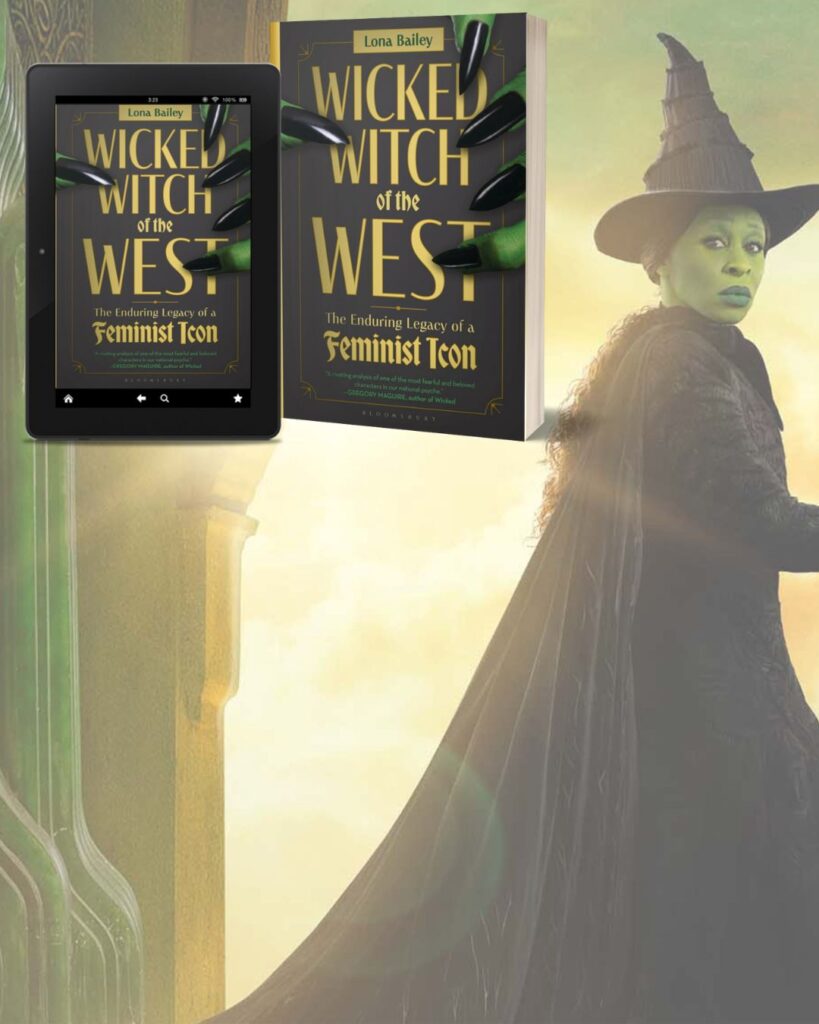
Tour Schedule
November 20th
Freelance Writer Janny (Jan Marie) C
http://freelancewriterjannyc.com
http://instagram.com/author_janny_janmarie_c
November 21st
@lflbookadventures
https://www.instagram.com/lflbookadventures
I Smell Sheep
http://www.ismellsheep.com
November 22nd
@therearenobadbooks
http://instagram.com/therearenobadbooks
November 24th
PhyllisJonesPisanelliReviews
http://pjp-reviews.com
November 26th
The Faerie Review
https://www.thefaeriereview.com
Anytime between 11/17-11/26
@staceywh_17
http://www.instagram.com/staceywh_17
SMS Nonfiction Book Reviews
http://smsnonfictionbookreviews.com
@quiettime.reading
https://www.Instagram.com/quiettime.reading
@meghenslittlelibrary
http://www.instagram.com/meghenslittlelibrary
@sudeshnalovesreading
https://www.instagram.com/sudeshnalovesreading
Chapter Break
http://chapterbreak.net
Amy’s Booket List
https://amysbooketlist.com
Sarandipity’s
https://sarandipitys.com
A Wonderful World of Words
https://awonderfulworldofwordsa.blogspot.com
What Is That Book About
http://www.whatisthatbookabout.com

